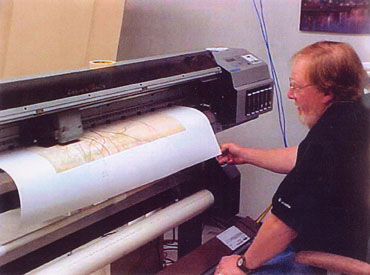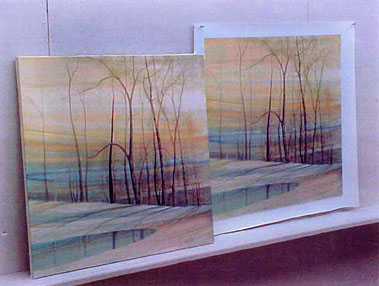
Giclée (pronounced zhee-clay) is a French word meaning "to spray." This method of printing is a 20th-century digital process derived from the Iris large-format technology.
No other reproduction process can match the quality of a giclée, nor come as close to reproducing the artist's original than the giclée process. Owning a giclée print by Pat Moss is the next best thing to owning the original itself.
While the quality is outstanding, the giclée is much more affordable. Pat's giclées are printed in small editions of just 250 prints and 25 artist's proofs. Because of their scarcity, they are true collectors' items.
To create a giclée, Pat's original painting is photographed under specific lighting conditions. A digital file is created. The master printer then manipulates this file so that the hues and subtleties in color of the original will be captured in the reproduction. This involves many stages of proofing: outputting a print followed by color corrections in every inch of the reproduction.
The goal is for the reproduction to match the original. Once the master printer feels he has achieved this goal, a final proof is sent to Pat. She marks up any further corrections that need to be done to the print. Once these final corrections are completed, production is ready to begin.
The final file is sent to the printer and the image is printed either to paper or to canvas. The ink is sprayed back and forth across the surface, line by line. This printing process is slow but very precise. Each of Pat's pieces takes from 30 to 60 minutes to print, depending on size, and is closely monitored throughout the process.
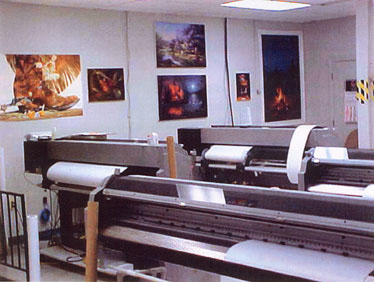
When a giclée is printed on paper, each sheet is fed into the printer individually. After it is printed, the sheet is trimmed to the final size.
When producing a giclée
on canvas, a roll of canvas is fed through the printer. Once the roll
of canvas is full of printed images, the coating process begins. Each
roll proceeds through a coater, where an environmentally-
safe, protective coating is applied to each image on the roll of canvas.
This protects the canvas from damage, such as water, and retards the
natural aging forces in the home environment.
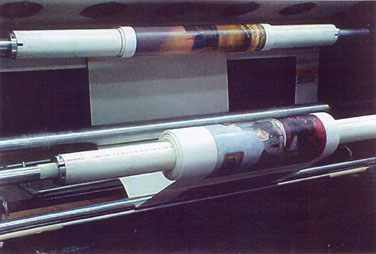
The inks used are pigmented and not dyes. Pigmented inks ensure a long-lasting, more fade resistant image. The canvas is archival and of the highest quality.
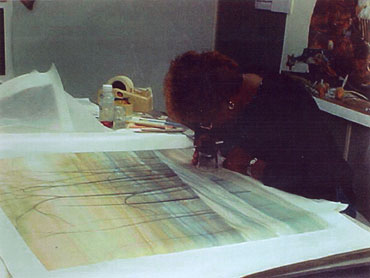
A staff of curators carefully inspects each canvas. Any printing flaw or canvas defect is detected at this stage and the canvas is either repaired or rejected.
The final product is then ready to be signed by Pat. After signing, a final inspection of every canvas is once again completed.
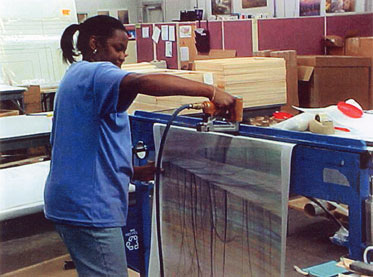
Each canvas is stretched and attached to the wooden stretcher bars according to Pat's specifications. Sizes and corners are exact. Corners are grooved and wedged.
An important advantage of the giclée method of art reproduction is that the final product requires no matting or glass cutting. The canvas arrives at the gallery ready to be framed, just like a painting.
